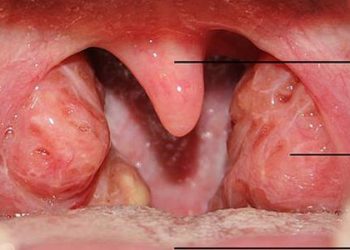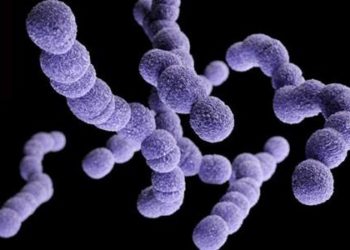Home scoring system may prevent unnecessary pharyngitis clinic visits
Image: PD/GAS
1. A new patient-derived home score developed to predict group-A streptococcus (GAS) associated pharyngitis may reduce unnecessary patient visits.
Evidence Rating Level: 2 (Good)
Study Rundown: Over 12 million patients will present with pharyngitis each year, but differentiating those caused by Group A Streptococcus (GAS) from other causes of pharyngitis has been historically challenging. This cohort study has established a home score to better predict those with GAS infections, with the goal of reducing both unnecessary clinical visits and antibiotic usage. The authors retrospectively analyzed over 200,000 patient encounters that used the current standard Strep Pharyngitis Algorithm. Incorporating biosurveillance data to measure local rates of GAS infections, a new home score (0-100) was created based on demographic, historical, and epidemiologic data without physical examination. When validated in the population, a home score of less than 10 had a high negative predictive value, and it would have saved an estimated 230,000 annual visits. However, 8500 GAS-positive patients will be overlooked by the score and left untreated. The strengths of this home score are its ability to be calculated without physical examination, but it is limited by concurrent knowledge of local GAS incidence.
Click to read the study in the Annals of Internal Medicine
Relevant Reading: Principles of appropriate antibiotic use for acute pharyngitis in adults: background
In-Depth [cohort study]: The cohort included 238,656 patient encounters at CVS minute clinics across 25 states from 2006-2008 who presented with a sore throat, which was narrowed to 132,821 patient visits among 9 centers, with two-thirds used for derivation of the score and the remaining third used for validation. A positive GAS pharyngitis was defined if either the rapid or confirmatory GAS test were positive, with 24% of both the derivation and validation sets GAS-positive. 14 home score predictors and biosurveillance knowledge were used in the algorithm calculation, creating a score between 0-100 (actual range 8-62). If the score was less than 10, the negative predictive value was 0.90. If this home score were used, 230,000 patient visits would be prevented, with 8500 GAS cases overlooked, equaling approximated 27 healthcare visits saved per GAS case missed. This model, which does not require clinical information, could be adapted for home use to identify low-risk individuals and allow for adjusted monitoring as symptoms progress. It also can be dynamically altered in regions of varying GAS incidence. However, this study was limited in that all analyses were performed retrospectively, and it does not take into account potential future errors in patient-derived information or more recent strains of GAS.
By Sai Folmsbee and Aimee Li, MD
More from this author: Combination therapy with tofacitinib improves response in rheumatoid arthritis USPTF recommends tobacco counseling for adolescents by primary care physicians Peer-delivered education through social networking increases home-based HIV testing ACP recommends weight loss and CPAP for obstructive sleep apnea Lifestyle interventions can reduce type 2 diabetes among high-risk patients
© 2013 2minutemedicine.com. All rights reserved. No works may be reproduced without expressed written consent from 2minutemedicine.com. Disclaimer: We present factual information directly from peer reviewed medical journals. No post should be construed as medical advice and is not intended as such by the authors, editors, staff or by 2minutemedicine.com. PLEASE SEE A HEALTHCARE PROVIDER IN YOUR AREA IF YOU SEEK MEDICAL ADVICE OF ANY SORT.









